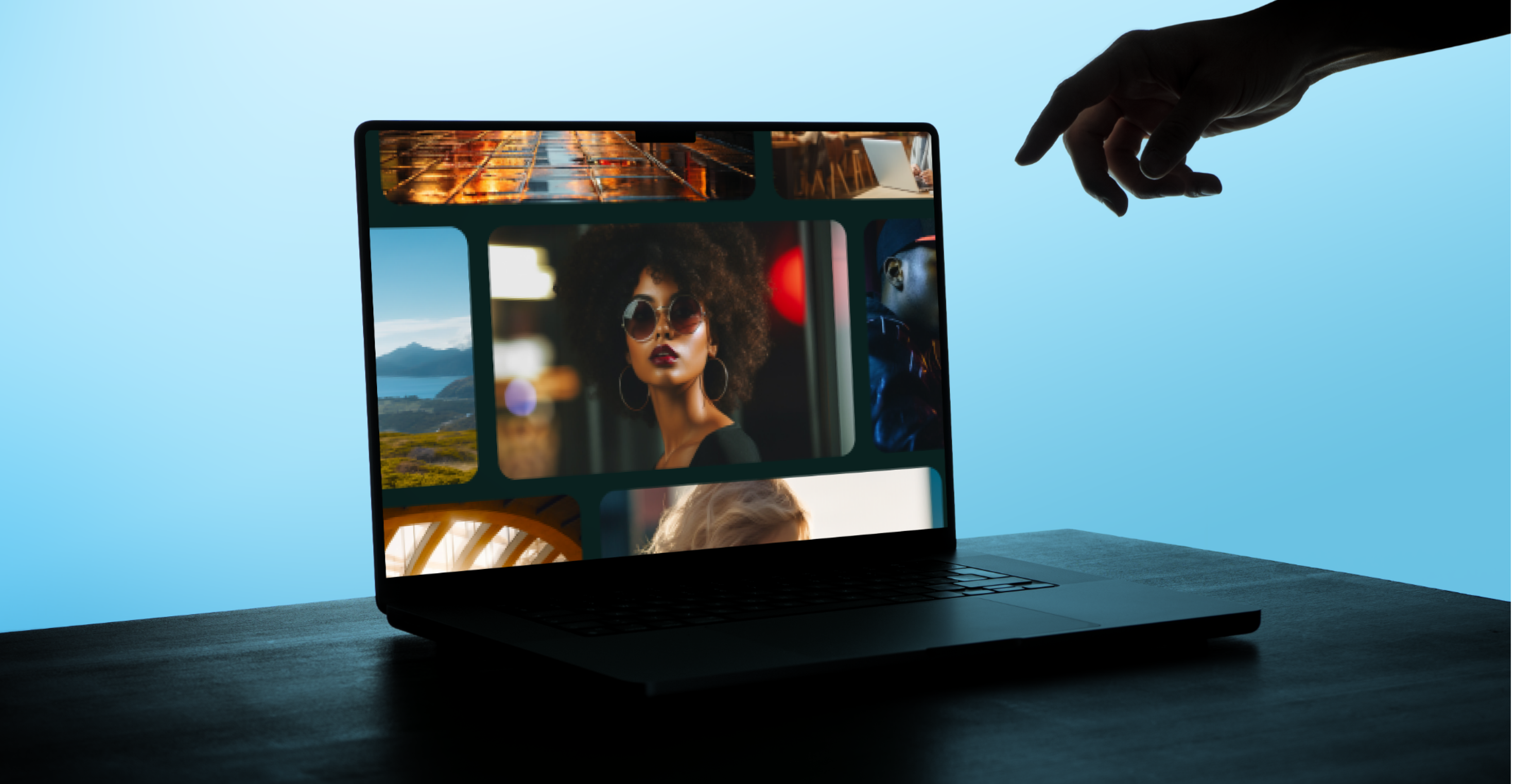
Learn the basics of color theory in our previous blog, What is Color Theory, and How Do You Use It?
Quick! Think of a brand whose company colors are red and yellow. Go on, give it a shot.
Got one? Good. Now, think of one whose colors are blue and white. Got one for that too, right? Now, think of a company whose colors are pink and gray.
You’re struggling, aren’t you? It’s not surprising. Those are horrible colors for almost any brand—no wonder the industry heavyweights you thought of steered clear.
This is why color combinations and color schemes are important. To be memorable, they have to amount to more than a slapdash mishmash of colors picked at random. In a glance, they have to articulate the “vibe” of the brand while being visually stimulating. When fashioned by skilled hands, a brand’s colors can stay with consumers forever. They’re there when you circle the mall food court for something fast and reliable, or when a design blog plays a game of brand recall with you.
Here’s how to make your brand work for you by picking colors that work with each other.
What You’ll Learn
How to Pick a Color Scheme with the Color Wheel
Popular Color Combinations for Marketing (with Examples)
How to Choose a Color Scheme for Your Business
Recap: What is Color Theory?
Color theory is the playbook for communicating with your audience through color. It’s the relationships between different colors, and can be used as a guiding light when combining them to achieve harmony, balance or chaos in a visual format.
Note that color theory isn’t a single tenet or piece of advice, but a body of ideas pertaining to the science and art of color.
In design and marketing, it’s about applying colors in combinations that serve the material’s message and/or brand in question. It’s also about knowing which colors may carry which associations, and using those associations to your advantage when generating high-performing creative design assets.
Knowing how to create fitting color schemes means having a basic understanding of the color wheel: an illustration of color hues around a circle, outlining the relationships between primary, secondary and tertiary colors.
How to Use the Color Wheel
Most of us first encountered the color wheel in an elementary school classroom. Save for the art students, many of us likely never touched one again. It’s a shame, considering how useful it is now that we’re all business folks and marketing masters.
A color’s placement on the wheel can help you determine which colors work well together. The color on the opposite side of the wheel from any individual color is called its “complement”. “Analogous” or “adjacent” colors are colors found beside one another on the wheel.
To select a color scheme with the color wheel, you’ll first need to know what kind of color scheme you want.
Examples of Color Schemes
Most colors are flexible in their applications, but can still be categorized by their overarching uses. It’s primarily used by designers to suggest complementary or bold color combinations.
Here are a few examples of color combinations that designers make regular use of:
- Achromatic: A presentation of neutral colors derived from black and white.
- Analogous: A combination of three adjacent primary, secondary, or tertiary colors on the color wheel (ex. yellow, light green and dark green).
- Complementary: A color scheme one built from colors directly across from each other on the color wheel (ex. blue and orange).
- Color Diad: A combination using two colors that are two sections apart from one another on the color wheel (ex. green and purple).
- Color Triad: A combination of three colors that are an equal distance from one another on the color wheel (ex. yellow, blue and red).
- Color Tetrad (or “square”): A combination of four colors that are an equal distance from one another on the color wheel (ex. green, violet, red and yellow).
- Monochromatic: A color scheme based on one color tint. It exclusively uses shades of a single hue, made by changing the saturation and brightness of the base color.
- Split Complementary: A color scheme made by choosing one color on the wheel (violet, for example), and using the color on each side of its complement (in violet’s case, the light orange and light green on either side of dark green).
How to Pick a Color Scheme with the Color Wheel
The combination you choose will depend on the color scheme you have in mind. Here’s how to use the wheel to pick from the three most common color schemes.
For a complementary color scheme: Pick a color on the wheel, then draw (or air-trace) a straight line across the wheel to find its complement. For instance, yellow is across the wheel from purple; blue sits across from orange.
For an analogous color scheme: Pick a color on the wheel that’s next to the color you’ve chosen. In practice, the analogous colors for yellow would be yellow-green and yellow-orange.
For a triad color scheme: Pick a single color, then draw (or air-trace) an even-sided triangle to find two other colors. Each color in the triad should have an even number of colors between itself and the next point of the triangle.
Which color scheme you pick will depend on which suits your brand, and may require some trial and error. A scheme with three or more colors may “pop” more, but may not serve your needs if your selling point is simplicity. If creativity and adventurousness are core values, a two-color scheme may seem unimaginative. Think about how your brand values can be represented in every facet of your color scheme.
Read on for some tips on choosing colors that speak to your brand’s values.
Popular Color Combinations for Marketing (with Examples)
Here are a few examples of color schemes that amplify the values of the brands they represent.
Pink & red (and a bit of orange): Imperfect Foods — Food & Beverage
Purple, yellow & turquoise: SALT — FinTech
Black & orange: Packt — EdTech
Blue & green: AEI Consulting — Real Estate
Orange, white & blue: Brio — Healthcare
Pink, blue & purple: Picsart — Multimedia Tech
Blue, green & white: Salesforce — SaaS
Yellow & Pink for Otta
Turquoise & orange: Amazon Pharmacy — Healthcare
Green & black: Quattr — SaaS
Yellow & pink: Talent by Entelo — HR SaaS
Best Colors for Marketing
There’s a prevailing idea that certain colors can be used to evoke certain emotions. It’s an enticing notion, in theory. To put someone in a purchasing mood, simply play on their uninhibited response to a red swatch and watch the sales roll in.
Sadly, color psychology is largely unsupported by evidence. It’s true that colors can draw associations (red looks “angrier” than yellow), but the theory that color alone can generate an emotional response is not substantiated; even less so in marketing.
There’s no easy route to finding the best color scheme for marketing on your own—it takes competitive research, deep insight into brand differentiators, the capacity for abstract thought and extensive artistic experience to come up with a stand-out color scheme. It’s why most successful businesses leave it in the hands of dedicated design teams rather than going it alone.
Here are the colors that pop up the most in modern marketing, and what associations people tend to assign them.
- Blue: Popular in financial services or tech. Prevailing associations include reliability, loyalty and security.
- Red: Popular in fast food and retail. Frequently associated with passion, excitement and urgency.
- Pink: Popular in children’s brands and beauty brands. Usually associated with love and fun.
- Yellow: Popular in fast food, though frequently used in other industries as well. Typically associated with joy, optimism and youth.
- Green: Popular among wellness brands. Often associated with nature, growth and health.
- Purple: Popular for luxury and cosmetic brands. Largely associated with wealth and luxury, though sometimes with wisdom or spirituality.
- Orange: Popular among food and beverage brands, as well as entertainment. Prevailing associations include energy, sociability and warmth.
- Black: No specific industry ties; often paired with white. Usually associated with sophistication or authority.
Bear in mind that these are only associations, not guarantees. Leaning too hard on stereotypes can also result in creative that’s indistinct from the rest of your market. If every financial services company colors themselves blue for “security”, the orange finserve company will be the one to stand out.
How to Choose a Color Scheme for Your Business
There’s a lot to consider when picking a color scheme, particularly as an ambitious business. Here are some other considerations to steady your hand:
- Does your color scheme “speak” to the values your business holds?
- Is your color scheme consistent with your existing logo or marketing materials?
- Are your competitors using a similar color scheme?
- Does your color scheme stand out from those of your competitors?
- Does the color scheme need to be adjusted for consistency across multiple mediums (online, print etc.)?
These are only a few of many factors that may affect your color combination. For that reason, the research and development of a brand’s color scheme is most often performed by dedicated design teams with extensive experience in these areas.
The Right Colors in the Right Hands
Color wields extraordinary power over our perception. A stop sign wouldn’t hit the same if it were turquoise; a brown banana doesn’t look as appetizing as a yellow one. We produce our best work when we play by its rules—ones you’ve started to familiarize yourself with.
Though you’ve gained an understanding how colors can be tweaked and combined for maximum marketing effect, the strongest results are bound to come from color experts: Designers who’ve dedicated their lives to turning color and shape into marketing results. Visual veterans like us at Superside are experts at developing color schemes that speak to a brand’s essence while capturing audience attention.












